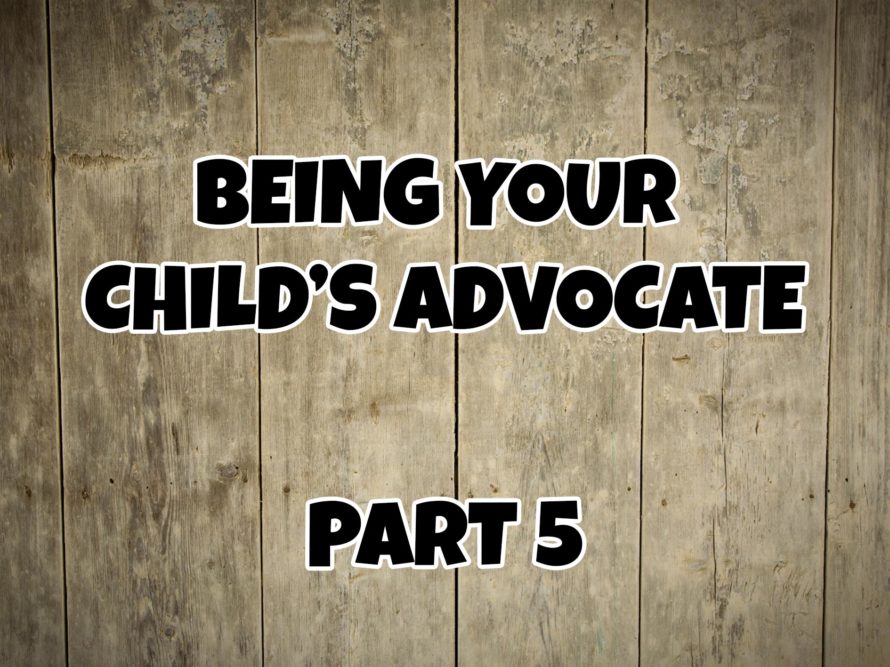In any large system like education, there are many layers of management, oversight, and accountability. In some ways, these layers can create burdens and obstacles to progress; but in other ways they give parents a pathway forward when they feel they’ve run into an impasse.
In Part 2 of this blog series [“Becoming The Right Kind of Dance Partner”], I suggested forming a relationship with the school-based team. That is a very important step in supporting your child, for it is human nature to try to help people we know, and the better we know them, the more we want to help them. But what do you do if your partner just won’t dance? Go find a more powerful dance partner.
At its core, the job of educators is to be on students’ side. In my classroom, I start the year with a full-value contract where the students and I make commitments to each other. One of my commitments is that I will always be on their side. Now, I explain clearly that being on their side doesn’t mean I will always agree with them or that I won’t hold them accountable. In fact, if I am truly on their side, it is my obligation to hold them accountable for their errors and teach them the skills needed to avoid these errors in the future.
Sometimes our kids are wrong, and educators need to find a way to steer them gently towards a better path. If a child insisted that 5 x 5 was 24, we would be remiss in not correcting them or helping them recalculate the equation. In some cases, we may need to take a hard look at whether our instruction has somehow led to this misunderstanding, and we might have to change ourselves. What we cannot do is rewrite all of mathematics to accommodate the child’s (or our own) error.
So, too, with behaviour. If a child is doing something unsafe, it is not appropriate to pretend it didn’t happen, thereby setting the stage for it to recur. Rather, we have to use these situations as opportunities to examine what might have contributed to the problem, including what in the environment should be changed and what skills the child needs to learn to be able to be more successful. As long as the guiding question is, “How can we help this child thrive?” or “How can we reduce this child’s stress?” we are showing that we are on the child’s side. It is when the question changes to, “What should we do about this child?” that allegiances should start to be questioned.
If someone in your child’s school is not on their side, you should report it to their supervisor.
Always start the process by talking to the person involved, but if that is not working, go up the ladder: Teacher or educational assistant to principal to superintendent to trustee or to the director’s office (and maybe even to the public).
In some cases, the teacher might be hamstrung with limitations placed on them by the principal or board, and as an employee they are powerless to take the matter further without risking professional discipline. Pursuing the issue might be doing them a tremendous favour. It’s possible that the school has been asking for more support, and it is not until the superintendent starts getting parent phone calls that the matter is finally given the attention it deserves. Or it may be that it got stuck at the level of the principal or teacher, and they need a bit of a nudge to take action. Ultimately, if you and your child are stuck in a spot that feels unacceptable, keep bringing it up and talking about it.
Here’s the caveat, though: Your child is absolutely the most important person to you, but every child in the school is the most important to somebody. If what you’re asking for is going to infringe on the rights of another child or is not in the best interest of the whole group, it will likely not be possible.
One common example is psychoeducational assessments. Parents often approach me about securing an assessment for their child and are upset when I say it might not be possible. Schools have limited access to psychology support and might only be able to do a few assessments per year (fewer during pandemic-related school interruptions). Parents often ask to be placed on a waiting list, but we don’t have a waiting list; we have a triage centre. We must constantly prioritize those whose needs would most immediately require an assessment. If you show up at the emergency room with a migraine or a swollen ankle, you will have to wait longer if someone comes in after you with a heart attack or a gunshot wound. So, too, it is with school assessments. If I have a child who can’t access appropriate programming such as a specialized class or support from an educational assistant without a full psychoeducational assessment, their needs are prioritized over the needs of a child who would just benefit from one to fine-tune their existing program. In an ideal scenario, there would be enough funding and resources to provide a fulsome assessment on every child to better understand their learning profile. Ours is not an ideal scenario.
There are also some situations where advocacy is not appropriate. One example is marks. If your child receives a mark that seems way out of line with what they and you had been expecting, it is worthwhile to talk to the teacher about it. My daughter once received a mark that was almost 20% lower than any other subject. We questioned the teacher and found out that an entire term’s mark had been based on one 10-mark quiz because he hadn’t yet marked the other assignments she had submitted. He apologized and corrected the error; he even had the vice-principal print a new report card. However, if your child has simply not met the stated requirements of the assignment or course, as long as those requirements are in line with their IEP, a low mark might be the consequence of their lack of preparedness or poor effort. Parent advocacy should be about ensuring your child has the tools to be successful. It is not a guarantee of success if they don’t put in the work. Simply put, advocacy should never be used as a tool to escape from reasonable consequences.
As well, some requests that you have might not be possible (or even desirable), no matter how far up the ladder you go. For example, many parents would like their child to have one-to-one EA support. That simply is not how public schools are funded. Support is allocated according to a process outlined by the school board. It should be transparent and equitable, but it won’t necessarily be what you might want. In truth, though, in many cases, one-to-one support is not in the best interest of the student, as it might encourage dependence on an adult rather than foster independence.
A final word on getting action is to ask for a timeline of when you can expect things will be done. As a parent recently said to me, “I don’t need the principal to just listen to my concerns. I have a husband and can get a therapist if I need one. I need the principal to act on my concerns.” You don’t need to be placated; you need action. And you need to know when it’s going to happen. This parent’s problem was related to bullying at lunchtime. She asked the principal, “What is going to change in the next two weeks?” The principal hemmed and hawed and, ultimately, the parent had to push the superintendent on the same question. But something did change, and their son started having happier lunchtimes.
The advocacy dance is a tricky one to learn, but if your partner can’t or won’t dance, find someone else who will.

